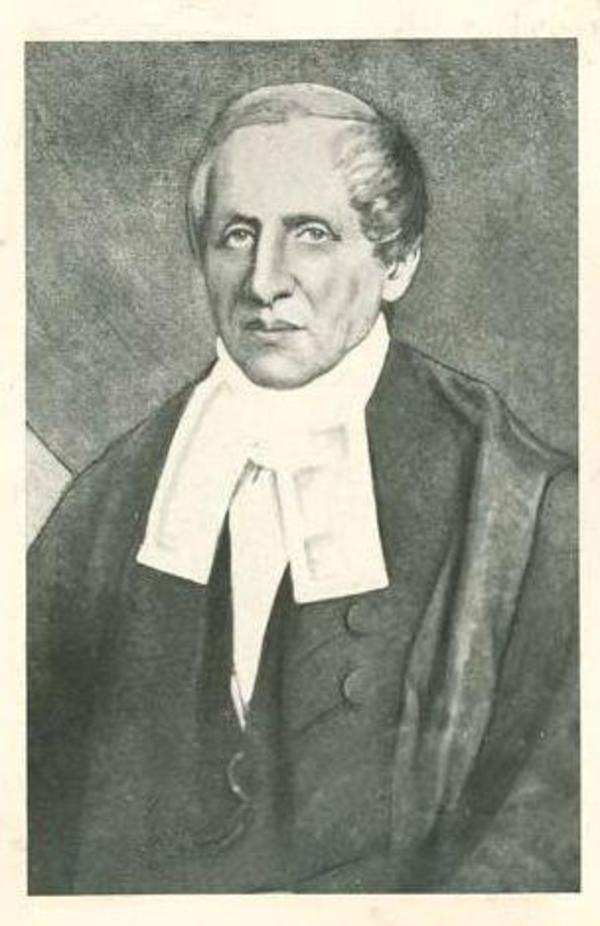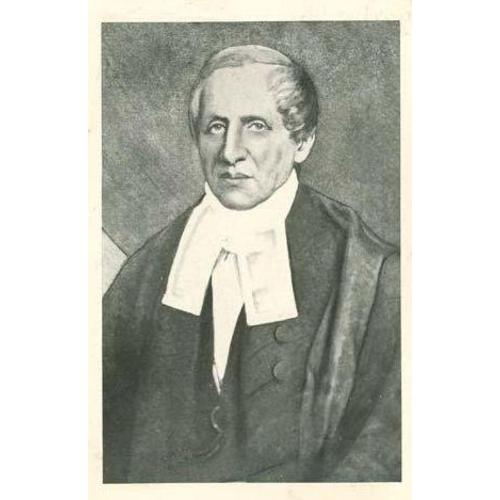
Source: Link
PANET, PHILIPPE, militia officer, lawyer, politician, judge, and justice of the peace; b. 28 Feb. 1791 at Quebec, son of Jean-Antoine Panet* and Louise-Philippe Badelard; m. 14 July 1819 Luce Casgrain in Rivière-Ouelle, Lower Canada, and they had 12 children, seven of whom died in infancy; d. 15 Jan. 1855 at Quebec.
After receiving a classical education at the Petit Séminaire de Québec from 1805 to 1810, Philippe Panet entered his father’s office on 3 Dec. 1811 to study law. However, he broke off his studies at the time of the second American invasion and went through the whole campaign of 1812–13 as a captain in Quebec’s 1st Militia Battalion. On 26 Oct. 1813 he served under Charles-Michel d’Irumberry* de Salaberry at the battle of Châteauguay. His mission was to hold the ford on the Rivière Châteauguay to prevent the enemy from crossing it and attacking the Voltigeurs from the rear. Panet was decorated for this action. He was to leave the militia on 1 Feb. 1833 with the rank of lieutenant-colonel.
Having managed to finish his legal training, Panet was called to the bar on 21 April 1817. The previous year he had been elected to the House of Assembly for Northumberland, which he represented from 25 April 1816 to 6 July 1824. Elections were held in 1824 but ill health prevented him from running. He was, however, a candidate in 1830, and won a seat in Montmorency. He served in the house from 26 Oct. 1830 to 3 July 1832. On 26 May 1831 the governor, Lord Aylmer [Whitworth-Aylmer*], appointed him to the Executive Council. As a councillor, Panet delivered the governor’s messages to the assembly and became the executive’s representative in the house.
On 29 June 1832 Lord Aylmer named Panet a judge of the Court of King’s Bench for the district of Quebec, to replace Jean-Thomas Taschereau*, who had died. In 1833, from 1836 to 1838, and again in 1840 Panet also performed the duties of justice of the peace. After the reform of the Executive Council carried out by Lord Durham [Lambton*], he again served on that body from 28 June 1838. By this appointment he also became a member of the Court of Appeal.
It was as a judge that Panet became famous. During the disturbances of 1837–38, one John Teed, a tailor of American origin, was arrested for high treason on 11 Nov. 1838 and incarcerated in the Quebec jail. His lawyer, Thomas Cushing Aylwin*, sought a writ of habeas corpus for his client from Panet and his judicial colleague Elzéar Bédard*. The Special Council had suspended the law of habeas corpus by ordinances issued on 23 April and 8 November. Panet and Bédard declared these decrees unconstitutional and on 21 November issued their warrant for Teed to appear before them. In the mean time the accused had been transferred to the citadel under military authority. Thereupon the two judges sentenced to imprisonment the jailer of the Quebec prison, and held the commandant, Colonel George Bowles, to be in contempt of court. At the beginning of December, Panet and Bédard were suspended from their judicial duties by Sir John Colborne*, their judgements on the Teed case were quashed on appeal, and their related orders set aside by the Special Council.
Philippe Panet, whose stature in the eyes of his fellow citizens was enhanced by this ordeal, was reinstated as a judge of the Court of Queen’s Bench on 8 Aug. 1840, and was reappointed to this court on 10 Feb. 1841. Following the reorganization of the courts of justice which was carried out in 1849, he sat on the Court of Appeal from 1 Jan. 1850 until his death at Quebec on 15 Jan. 1855. At the time of Panet’s demise, the bar of Lower Canada expressed its highest “esteem for [his] independence of character and for [his] irreproachable integrity in the execution of the important duties of his office.”
ANQ-Q, CE1-1, 2 mars 1791, 18 janv. 1855; CE3-1, 14 juill. 1819. ASQ, Fichier des anciens. Le Canadien, 15, 19 janv. 1855. La Minerve, 19 janv. 1855. F.-J. Audet, “Les législateurs du Bas-Canada.” P.-V. Charland, “Notre-Dame de Québec: le nécrologe de la crypte ou les inhumations dans cette église depuis 1652,” BRH, 20 (1914): 313. Fauteux, Patriotes, 172, 379–80. Le Jeune, Dictionnaire, 2: 400–1. Officers of British forces in Canada (Irving), 119, 144. P.-G. Roy, Fils de Québec, 3: 50–52; Les juges de la prov. de Québec. Chapais, Cours d’hist. du Canada, 4: 224–25. P.-G. Roy, La famille Panet (Lévis, Qué., 1906), 91–121. Benjamin Sulte, Histoire de la milice canadienne-française, 1760–1897 (Montréal, 1897). Mason Wade, Les canadiens français, de 1760 à nos jours, Adrien Venne et Francis Dufau-Labeyrie, trad. (2v., Ottawa, 1963). “Les combattants de Châteauguay,” BRH, 21 (1915): 28. Lucien Lemieux, “Juges de la province du Bas-Canada de 1791 à 1840,” BRH, 23 (1917): 89.
Cite This Article
Claude Vachon, “PANET, PHILIPPE,” in Dictionary of Canadian Biography, vol. 8, University of Toronto/Université Laval, 2003–, accessed January 1, 2026, https://www.biographi.ca/en/bio/panet_philippe_8E.html.
The citation above shows the format for footnotes and endnotes according to the Chicago manual of style (16th edition). Information to be used in other citation formats:
| Permalink: | https://www.biographi.ca/en/bio/panet_philippe_8E.html |
| Author of Article: | Claude Vachon |
| Title of Article: | PANET, PHILIPPE |
| Publication Name: | Dictionary of Canadian Biography, vol. 8 |
| Publisher: | University of Toronto/Université Laval |
| Year of publication: | 1985 |
| Year of revision: | 1985 |
| Access Date: | January 1, 2026 |



